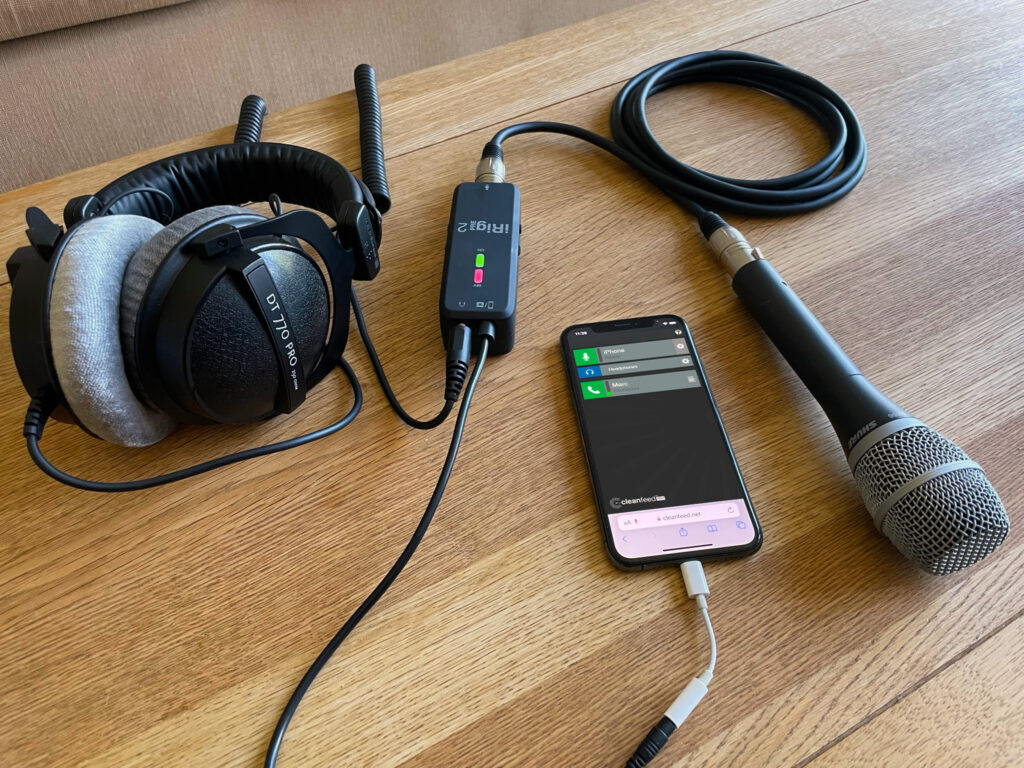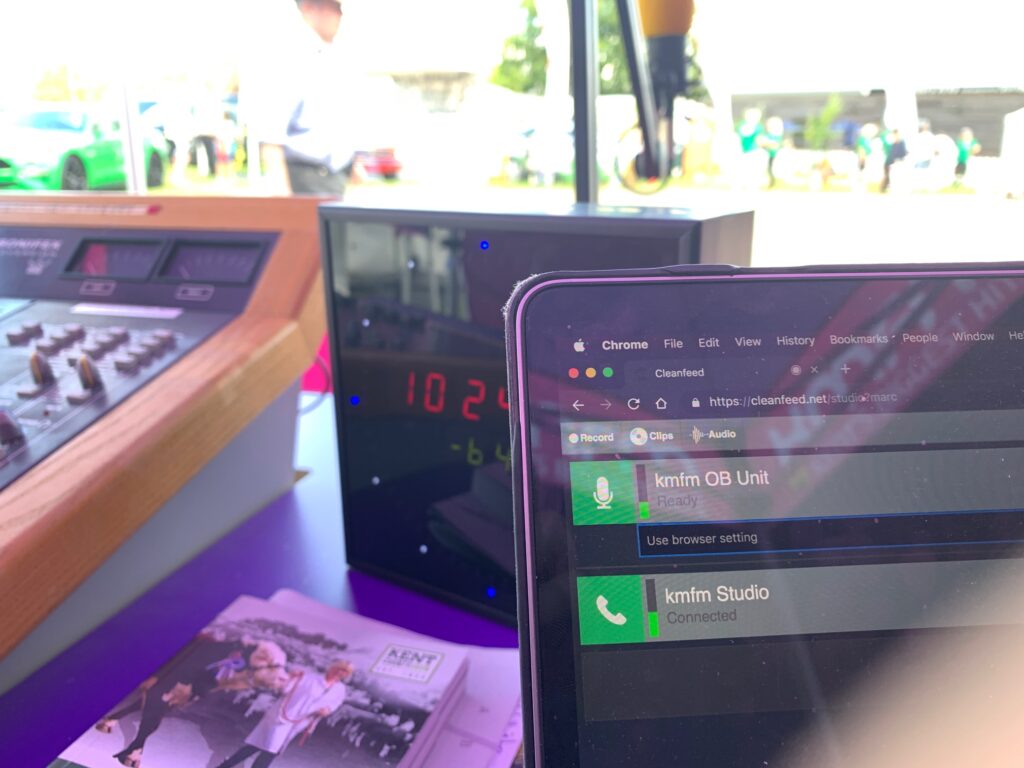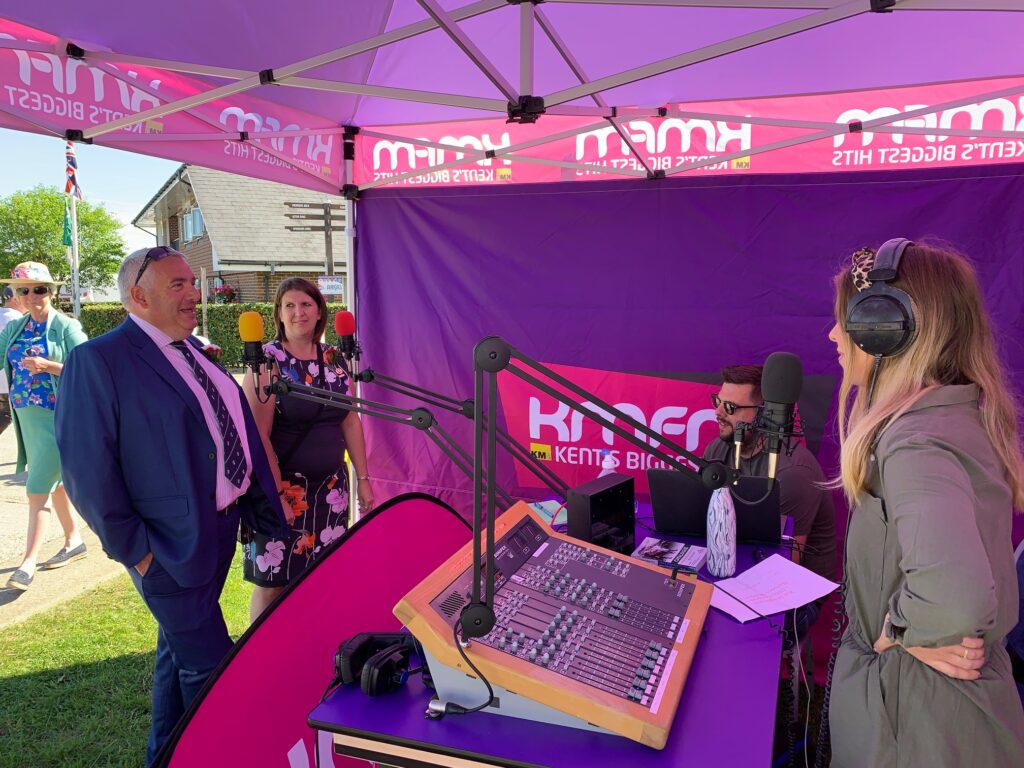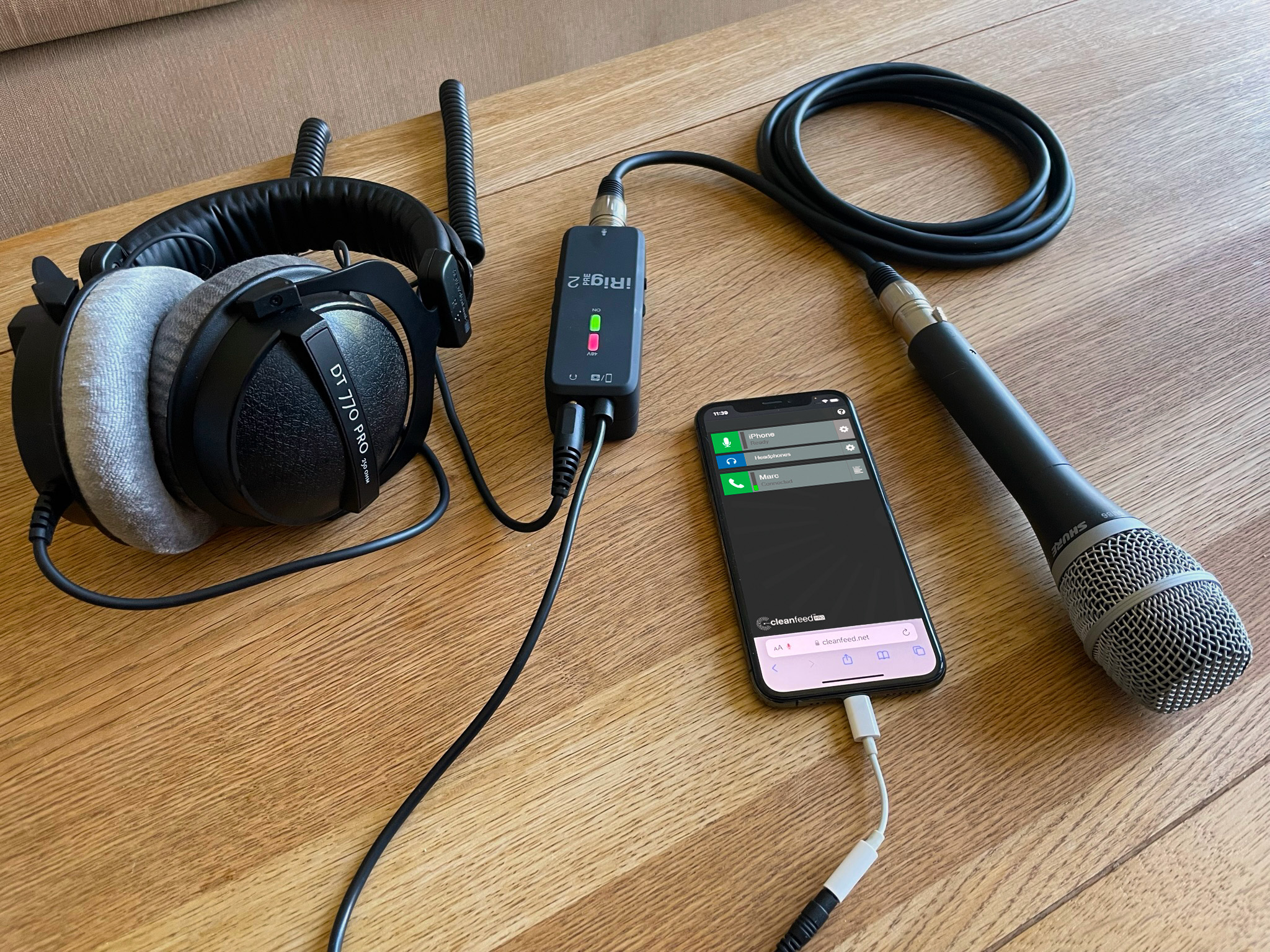Doing a live broadcast or report from a remote location is fun. Your audience will enjoy a change and it’s a chance to meet them in person
Whether you’re a producer, presenter or engineer, you probably have a bunch of questions if you’ve never done something like this before. Going live, from anywhere remote, can sometimes seem daunting. But with a bit of planning, it can be an enjoyable and rewarding experience.
The key to a professional sounding live broadcast, is clean and untouched audio. In a sense, like having an audio cable from your remote location back to the studio, but over the Internet. That’s where Cleanfeed comes in.
Back in 2017 I covered what it took to do a live outside event in front of over 5000 people and doing a live show back to the studio.
Planning
Planning your outside broadcast is the best thing you can do. It takes the worry out of taking the show on the road. Have everything organised before you even get on the road, with the right content and kit.
Type of remote broadcast
Deciding on the type of remote broadcast you are hoping to do will almost certainly dictate the reset of the steps and setup you require. If it’s reporting from a remote location, it may mean less equipment versus a fully hosted show with multiple presenters and music.
Location
You’ll need to plan on where are you doing your remote broadcast. Have you been asked by a client to cover a special event? Or, do you just want to take your show somewhere else for the day?
Either way, you’ll need a location. A location that is safe for you, your team and equipment. Though more importantly, one that offers good connectivity in order to send your live show or report back to the studio, live. If your remote location doesn’t offer a cabled Internet connection or good WiFi connectivity, does it have strong 4G or 5G connectivity?
Recently I was asked to assist with a feature a radio station wanted to run. The co-host of a popular morning breakfast show was going to be at a different location each day. My engineering hat immediately asked for the postal codes of the areas they wanted to go to. This way I was able to assess the mobile coverage for each location in order to give the program director the green flag on what they wanted to do.
Branding
Being out and about is a good opportunity to get seen, as well as heard. Whether you’re on your own or part of a team, get yourself branded up. If you’re hosting an event, think about microphone windshields with your logo on it. How about some branded up shirts or jackets. If you’re hoping to make a big impact, a fully branded inflatable dome can be a fun idea!
An outside broadcast is a great opportunity to meet your listeners, too. So being on top form will leave a lasting impression.
Content & Equipment
An early decision about what you’ll be covering or doing at the remote broadcast will help you plan for the equipment you need to take.
If you’re just a sole reporter or co-host wanting to do something from out-and-about, then a simple setup may be all you need.
If you’re hoping to do interviews with other people and also play back music, then this will need more equipment and the use of a mixer, in some cases.
Top tip: Get your remote kit tested at the studio before you go out? Avoid using your local WiFi or Ethernet network to make the connection. You might find you have the wrong cables, so best to iron out these issues before you head out.
As a sole reporter or presenter, you may find it easier to take a mobile phone, microphone and headphones.

If you’re expected to host multiple presenters and send stereo content back to the studio, then you may need a mixer with broadcast capable features in order to setup the right “mix-minus”.


Sending it back. Going live!
Sending your live remote broadcast back to the studio couldn’t be any easier or sound any better, with Cleanfeed. In our Knowledgebase article “A live outside broadcast“, we outline what you need to do in order to get your audio back to the studio.
Test, test, test
Doing further test contributions on the day of your live broadcast back to the studio is an important step. You’ll need to make sure you have the capacity and stability to do the remote broadcast without any major disruptions. For example, if you are planning a broadcast from a crowded place over mobile connectivity, you’ll also want to ensure you do a test with similar conditions as you would have on the day of the event.
Have fun
Once you have established a link with the studio, it will be up to the studio operator to bring you on and off the air, when it comes to it. It goes without saying, good luck and have fun!
If you are doing a full show with music, then you’ll need to conduct the show in the same way as you would have if you were back at the studio. ie. you’ll always be live.
When it’s all over the studio will normally turn down the remote broadcast and return to regular programming.
What happens if I mess up?
Sometimes things can go wrong, but it’s how you handle the issue when it arises. By panicking more, it normally results in more mistakes happening. Take your time, don’t panic! If things were working before, then normally the issue is obvious. Moving cables and making big changes can sometimes set you back. Most importantly, don’t apologize. If the outage is short, then your listener may not even notice.
Wrapping up
I hope this post has been helpful. We know from first hand experience how daunting but rewarding doing an outside broadcast can be. While not every scenario will be the same, we would encourage you to give it a go if you’ve never done one! If you have any questions, then always feel free to drop us a line.
